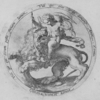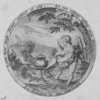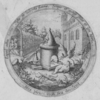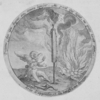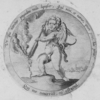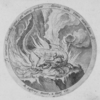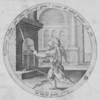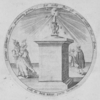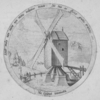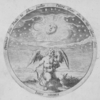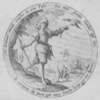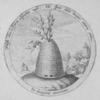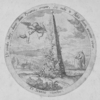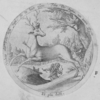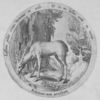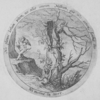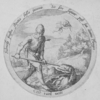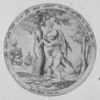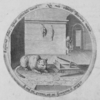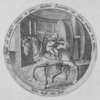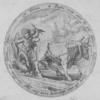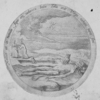O l’estroit eslargir [12]
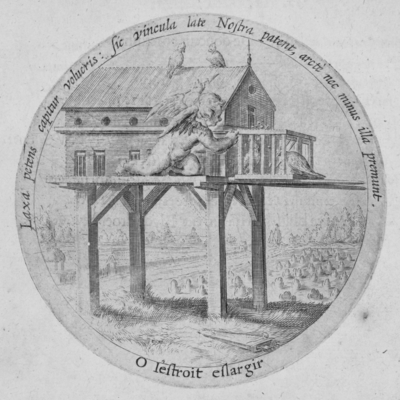
Vier vensters quellen my/ vier Vensters inde minne
De ooghen die ick hebb/ en die van mijn Vriendinne/
Daer herberght1 VENUS kindt2/ dat is zijn eyghen erf/
Mijn ooghen die ick draegh/ die staen na3 mijn verderf.
Zy stryden teghen my/ wie wil ick het gaen clagen?
Ick hebbe zelf gehadt in mijn verderf behagen.
Als ick daer buyten was/ zoo moest’ ick daer in zijn/
Waer ick nu weer daer uyt/ zoo waer ick uyt de pijn.
De ooghen die ick hebb/ en die van mijn Vriendinne/
Daer herberght1 VENUS kindt2/ dat is zijn eyghen erf/
Mijn ooghen die ick draegh/ die staen na3 mijn verderf.
Zy stryden teghen my/ wie wil ick het gaen clagen?
Ick hebbe zelf gehadt in mijn verderf behagen.
Als ick daer buyten was/ zoo moest’ ick daer in zijn/
Waer ick nu weer daer uyt/ zoo waer ick uyt de pijn.

Translations
 |
Het smalle verbreden. |
 |
To widen what is narrow. |
 |
De vogel die het luchtruim kiest, wordt gevangen. Zo zijn onze banden heel los, maar houden ze ons niet minder bekneld. |
 |
The bird that takes to the air is captured. Thus our bonds hardly bind us, but are nonetheless galling. |
Literature
Sources and parallels
- Same emblem in 1608 edition: O l’estroit eslargir [12] (in: Daniël Heinsius, Emblemata amatoria (1607/8))
[Compare
![Compare [compare]](/static/images/compare2.gif) ]
]
- Parallel (and perhaps adaptation) for the emblem: Bredero a.o., Thronus Cupidinis (facsimile)
 , embl. 2
, embl. 2 -
Parallel in the 1616 edition: motto and pictura the same, subscriptio departs slightly: O l'estroit eslargir. [36] (in: Daniël Heinsius, Ambacht van Cupido, from: Nederduytsche poemata (1616))
[Compare
![Compare [compare]](/static/images/compare2.gif) ]
]
-
Parallel within this emblembook: Perch’ io stesso mi strinsi [21] (in: Daniël Heinsius, Quaeris quid sit Amor (c. 1601))
[Compare
![Compare [compare]](/static/images/compare2.gif) ]
]
References, across this site, to this page:
- Perch’ io stesso mi strinsi [21] (in: Daniël Heinsius, Quaeris quid sit Amor (c. 1601))
- O l’estroit eslargir [12] (in: Daniël Heinsius, Emblemata amatoria (1607/8))
- O l'estroit eslargir. [36] (in: Daniël Heinsius, Ambacht van Cupido (1613))
- O l'estroit eslargir. [36] (in: Daniël Heinsius, Ambacht van Cupido, from: Nederduytsche poemata (1616))
Iconclass
Cupid watches a dove who is entering a bird-cage- landscapes in the temperate zone
[25H1]

- birds in a large cage, aviary
[34B132]

- fowling, fowler (+ variant)
[43C13(+0)]

- archer's weapons: arrow
[45C15(ARROW)]

- Restriction, Limitation (+ emblematical representation of concept)
[51EE11(+4)]

- Pain, Sorrow, Sadness; 'Dolore', 'Dolore di Zeusi' (Ripa) (+ emblematical representation of concept)
[56BB1(+4)]

- (personifications and symbolic representations of) Love; 'Amore (secondo Seneca)' (Ripa) (+ emblematical representation of
concept)
[56F2(+4)]

- proverbs, sayings, etc. (with TEXT)
[86(O L'ESTROIT ESLARGIR)]

- Cupid handling his weapons
[92D152]

- attributes of Cupid (with NAME)
[92D18(ARROW)]

- attributes of Cupid (with NAME)
[92D18(QUIVER)]

![[H O M E : Emblem Project Utrecht]](/static/images/rd-small.gif)


